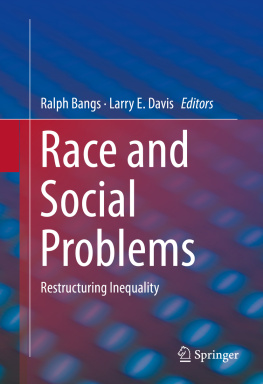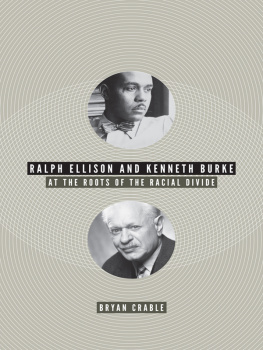Ralph Bangs - Race and Social Problems
Here you can read online Ralph Bangs - Race and Social Problems full text of the book (entire story) in english for free. Download pdf and epub, get meaning, cover and reviews about this ebook. City: New York, year: 2016, publisher: Springer-Verlag New York, genre: Politics. Description of the work, (preface) as well as reviews are available. Best literature library LitArk.com created for fans of good reading and offers a wide selection of genres:
Romance novel
Science fiction
Adventure
Detective
Science
History
Home and family
Prose
Art
Politics
Computer
Non-fiction
Religion
Business
Children
Humor
Choose a favorite category and find really read worthwhile books. Enjoy immersion in the world of imagination, feel the emotions of the characters or learn something new for yourself, make an fascinating discovery.
- Book:Race and Social Problems
- Author:
- Publisher:Springer-Verlag New York
- Genre:
- Year:2016
- City:New York
- Rating:5 / 5
- Favourites:Add to favourites
- Your mark:
- 100
- 1
- 2
- 3
- 4
- 5
Race and Social Problems: summary, description and annotation
We offer to read an annotation, description, summary or preface (depends on what the author of the book "Race and Social Problems" wrote himself). If you haven't found the necessary information about the book — write in the comments, we will try to find it.
Race and Social Problems — read online for free the complete book (whole text) full work
Below is the text of the book, divided by pages. System saving the place of the last page read, allows you to conveniently read the book "Race and Social Problems" online for free, without having to search again every time where you left off. Put a bookmark, and you can go to the page where you finished reading at any time.
Font size:
Interval:
Bookmark:
Introduction
- The labor force participation rate for men in 2012 was 74 % for Hispanics, 71 % for Asians, 67 % for Whites, and 62 % for Blacks (USBLS )
- The unemployment rate in 2013 was 13 % for Blacks, 9 % for Hispanics, and 7 % for Whites (EPI )
- The underemployment)
- Annual household income in 2012 was $68,636 for Asians, $57,009 for Whites, $39,005 for Hispanics, and $33,321 for Blacks (Fry )
- Black male earnings for ages 1864 declined from 52 % of White male earnings in 1980 to 28 % in 2008 (Pettit )
- Poverty rates in 2012 were 26 % for Blacks, 23 % for Hispanics, 12 % for Whites, and 12 % for Asians (Macartney et al. )
- 65 % of Black, 65 % of Hispanic, 32 % of Asian, and 31 % of White children live in low-income families (<200 % of poverty)
- 66 % of Black and 6 % of White children grow up in neighborhoods with 20 % or more poverty (Sharkey )
- The share of workers earning poverty wages in 2011 was 43 % for Hispanics, 36 % for Blacks, and 23 % for Whites (EPI )
- Homeownership rates in 2011 were 74 % for Whites, 58 % for Asians, 47 % for Hispanics, and 45 % for Blacks (McArdel et al. )
- Median household net worth in 2011 was $100,500 for Whites, $89,339 for Asians, $7,683 for Hispanics, and $6,314 for Blacks (Ishimatsu )
- Among single women age 1864 in 2007, Whites had median wealth of $41,500, Hispanics had $120, and Blacks had $100, and roughly 50 % of Black and Hispanic women had zero or negative net worth (Insight Center for Community Economic Development )
Font size:
Interval:
Bookmark:
Similar books «Race and Social Problems»
Look at similar books to Race and Social Problems. We have selected literature similar in name and meaning in the hope of providing readers with more options to find new, interesting, not yet read works.
Discussion, reviews of the book Race and Social Problems and just readers' own opinions. Leave your comments, write what you think about the work, its meaning or the main characters. Specify what exactly you liked and what you didn't like, and why you think so.












